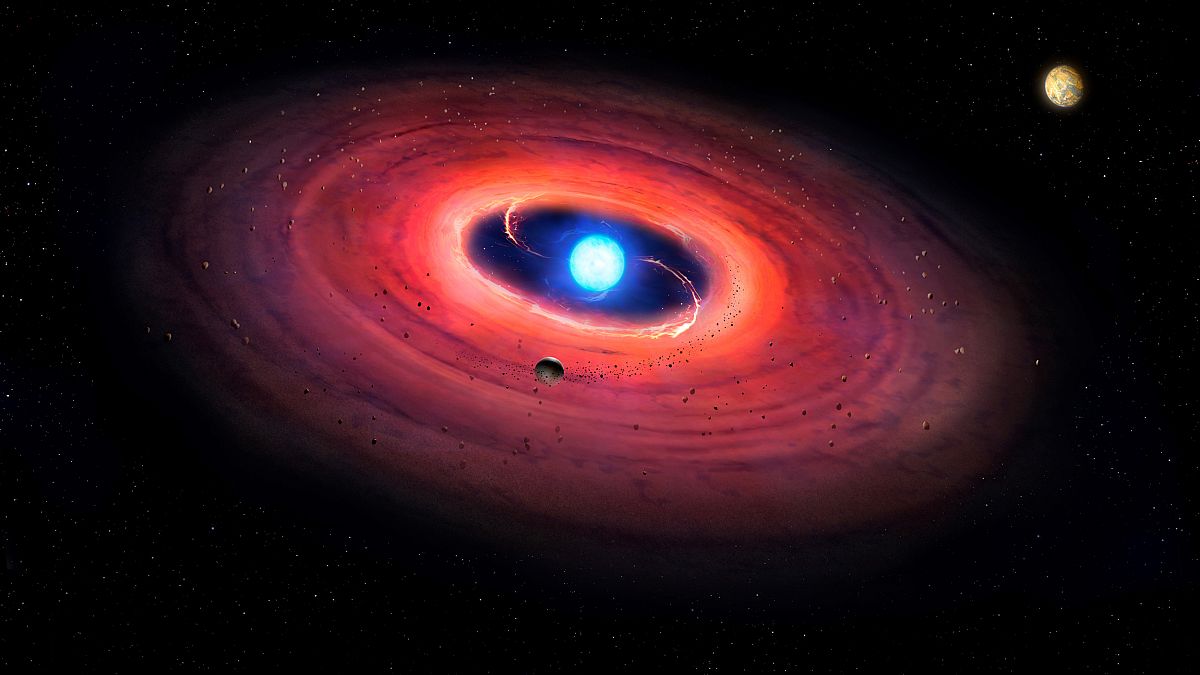New look at handful of nearby stars shows they were once orbited by rocky planets like our own.
Earth-like planets may not be so special after all, and that's good news for scientists involved in the search for alien life.
A new analysis of light from nearby stars suggests that rocky worlds like our own are plentiful in our Milky Way galaxy. In turn, the finding suggests that many exoplanets — possibly with magnetic fields, substantial atmospheres and tectonic plates that bring minerals to the surface — could have conditions that allowed life to evolve there.
"When we started to find planets around other stars, the odds of life existing on other stars went up," said Edward Young, a geochemist at the University of California, Los Angeles, and a co-author of a paper about the new research published Oct. 18 in the journal Science. "When we started finding rocky planets, they went up again — and now we are finding evidence that the rocky planets could be similar to Earth, so now the odds have gone up yet again."
Science
For their research, Young and other members of his team used data from telescopes at Hawaii's Keck Observatory to study the light from six white dwarf stars located 200 to 665 light-years from Earth.
Each of the white dwarfs was once a star much like our sun but all exploded millions of years ago after exhausting the hydrogen that served as their fuel. The explosions left behind super-dense remnants of the original stars' cores, roughly half the mass of our sun and the size of the Earth, surrounded by orbiting disks of rocky fragments that were once their planets and nearby asteroids.
The researchers studied patterns of light emitted by the white dwarfs — a technique known as spectroscopy — to reveal the chemical composition of the rocky fragments, which had been sucked up by the white dwarfs' intense gravity.
"Observing a white dwarf is like doing an autopsy on the contents of what it has gobbled in its solar system," geochemist Alexandra Doyle of UCLA, the paper's lead author, said in a statement.
What did the analysis reveal? Five out of the six white dwarfs had sucked up fragments whose chemical composition is similar to rocks on Earth, Venus and Mars (which along with Mercury are our solar system's rocky planets). The researchers concluded that the planets that gave rise to the fragments were made of similar rock.
Since the minerals in the fragments are similar to those on Earth, it's likely that the planets that gave rise to the fragments resembled our planet in other ways — including having a relatively dense atmosphere, a metallic core that generates a magnetic field capable of protecting life from harmful radiation from space, and tectonic plates that help recycle buried minerals to the surface.
Astronomer Caleb Scharf, director of the Columbia Astrobiology Center in New York City, praised the new research."This is a terrific bit of astronomical detective work … neatly bringing astrophysics together with geochemistry," he told NBC News Mach in an email.
Scharf said conditions suitable for life depend upon many additional factors not addressed in the new research, including the presence of radioisotopes as a source of heat in a planet's interior and other quirks of planetary formation. "But it definitely points towards many rocky planets being pretty familiar in terms of their general composition and, therefore, structure and behavior," he said.
Seth Shostak, a senior astronomer for the SETI Institute in Mountain View, California, echoed Scharf's assessment of the new research. "It's a very ingenious scheme to learn if worlds like Mercury, Earth or Mars are common or otherwise," he said in an email. "Fortunately for those hoping to find life elsewhere in the cosmos, it seems such planets are likely to be ubiquitous."
More than 4,000 exoplanets have been found around other stars in our galaxy, most by the Kepler Space Telescope. But we have yet to find alien life.
Want more stories about space?
- Astronomers just discovered Spock's home planet, Vulcan
- This weird 'whiplash' planet is unlike anything astronomers have ever seen
- How a discovery that won the Nobel Prize in Physics transformed the hunt for alien life
Sign up for the MACH newsletter and follow NBC News MACH on Twitter and Facebook and Instagram.
